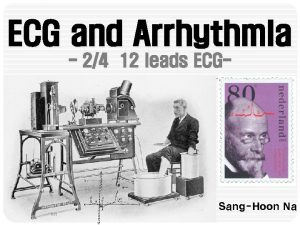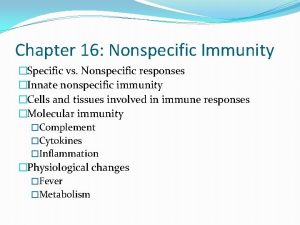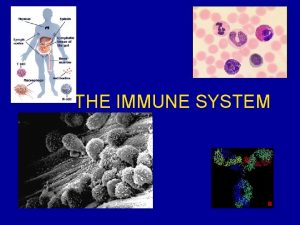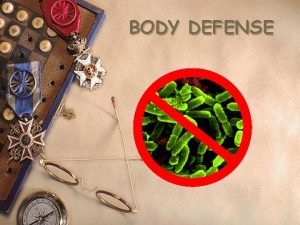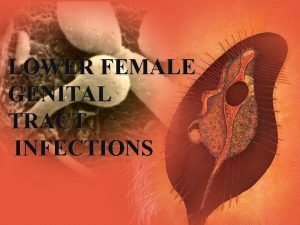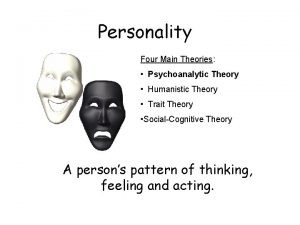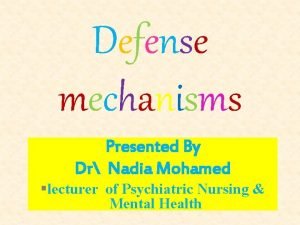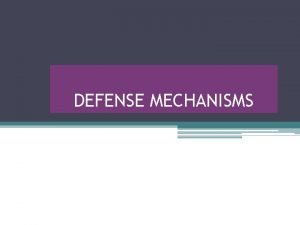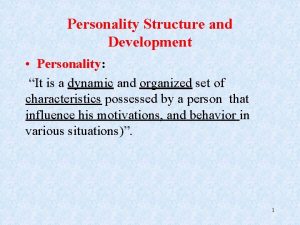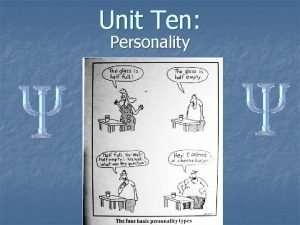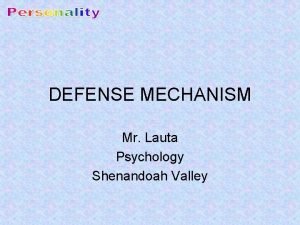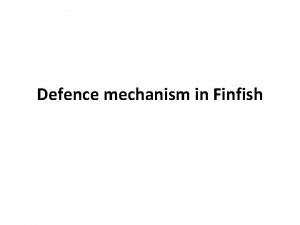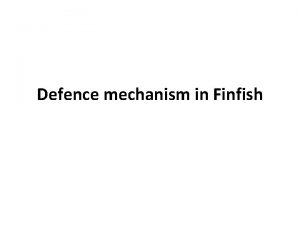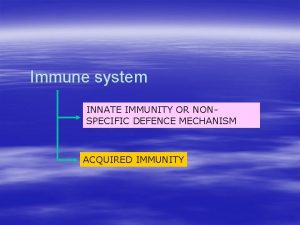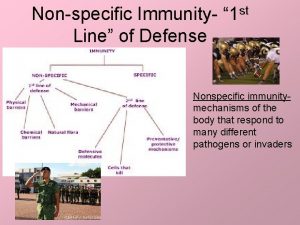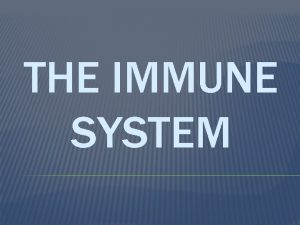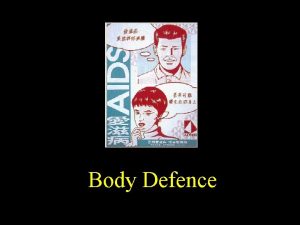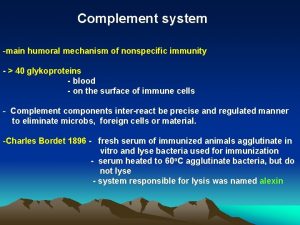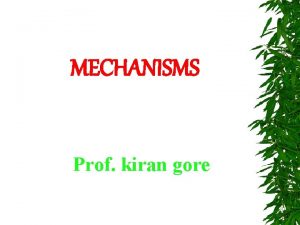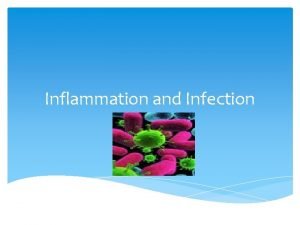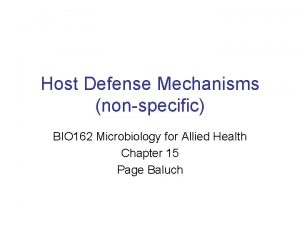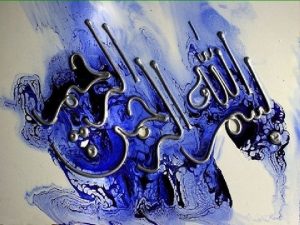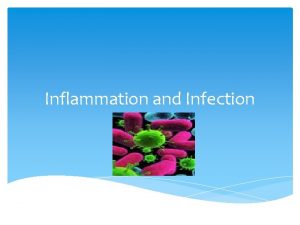Defence mechanism in Finfish Nonspecific defence mechanisms Surface























- Slides: 23

Defence mechanism in Finfish

Non-specific defence mechanisms Surface barriers • Mucus, Skin, Gills, Gastrointestinal tract Non specific humoral factors • Growth inhibitors transferrin interferon • Enzyme inhibitors • Lysins complement lysozyme • Precipitins and agglutinins • CRP • Natural antibody

Surface barriers Mucus • Helps in entraping microorganisms • continuous sloughing inhibits colonisation of microorganisms on the integument. Skin • Epidermal integrity vital for maintaining osmotic balance and excluding microorganisms. • Epidermal healing comparably faster in fish even at low temperature. • Malphigian cells migrate from periphery of the wounds over the surface rapidly closing the lesion. • Epidermis also responds to non-specific irritation by thickening of the cuticle.

Contd…. . Gills • An important route of pathogen entry. • highly responsive and results in hyperplasia in the event of any irritation. • Also contain phagocytic cells in the branchial capillaries. Gastro intestinal tract • The lining of the GI tract is similar to skin in many aspects. • Low p. H and bile secretion makes the environment hostile for invading pathogens.

Non specific humoral factors Growth inhibitor Transferrin: – Has very high capacity for iron, which is an essential growth element for all the organisms. – Ability to sequester Fe gives transferrin bacteriostatic and fungistatic effect. – siderophores produced by many microorganisms which compete with transferrin for iron. Interferon – These are substances produced by animal cells following viral infection. – Rate of production is temperature dependent. – exhibit non-specific antiviral activity.

Enzyme inhibitors • Include antiproteases, which act against the enzymes produced by the microorganisms. • The antiprotease �- 2 – macroglobulin protects salmonids against Aeromonas salmonicida

Lysins • Either themselves or in combination may cause lysis of pathogen cells • Two important lysins are 1. Complement 2. lysozyme

Complement • Complement is an enzyme cascade system present in serum and tissue fluids • It has 12 protein components Cascade activated in 2 major pathways a) Classical pathway- Require the target cell to be coated with antibody which activates and orientate complement to damage target cell membrane b) Alternative pathway- Initiated by certain agents such as bacterial endotoxin, solid polysaccharides zymosan and insulin. • These compounds first activate properdin, which in turn activate the rest of the complement cascade.

Lysozyme • Lysozyme acts on peptidoglycan component of the cell wall of microorganisms. • In most cases, the outer membrane in bacterial cell wall needs to be disrupted by complement to allow lysozyme to act. • Abundantly present in phagocytic cells, serum and mucus. • More effective against Gram positive bacteria.

Precipitins and agglutinins CRP (C-reactive protein): • Binds to phosphoryl – ester groups present on many microbial cell walls. • CRP is detected in normal serum and eggs of many teleost species. • Action needs presence of Ca 2+ ions and is solubilised by chelating agents. • In mammals, CRP activates complement. In fish the role of complement is not fully documented. Natural antibodies: • These compounds are reported to have agglutinating or precipitating activity to a wide variety of erythrocytes, bacteria and polysaccharides. • Belong to immunoglobulins or lectins. Lectins are proteins, bind specifically to simple sugars and are important in invertebrate defence. • In fish thought to act as opsonins.

Non-specific cellular factors Phagocytes • two cell types are recognised as important in their phagocytic role 1) Monocytes/macrophages 2) Neutrophil granulocytes

Monocytes • Found in kidney and in small numbers in blood. • Precursors of tissue macrophages. • capable of migrating in the blood to inflammatory sites giving rise to macrophages when and where necessary. • Macrophages containing melanosomes within the lysosomes are called melanomacrophages. • They are phagocytic to a variety of particles viz. carbon, bacteria and yeasts. Melanin – may have bactericidal activity involving production of free radicals by phagocytic cells.

Contd… Macrophages • In teleosts, these cells are found widespread in tissues including gills, peritoneum, kidney and spleen but not in liver. Neutrophils • Similar to mammalian neutrophils and are present in kidney, spleen and blood and inflammatory lesions. • Require a stage of maturation to attain phagocytic competence

Phagocytic activation Opsonins • Can act non-specifically, as in the case of complement or specifically in the case of antibodies. • Opsonization : - labelling of the pathogen cell membrane by a molecule (opsonin) that identifies a pathogen as a target for phagocytosis. • Enhances rate of elimination of pathogens. Lymphokines • these are diverse group of secreted molecules, which transmit signals between cells engaged in immune responses.

Natural cytotoxic cells • Present in normal fish, morphologically similar to monocytes. • Role in the defence system of fish not yet fully understood. • Reported to have cytotoxic effect against tissue culture cells.

Specific defence mechanisms in fish • Humoral immunity - refers to production of soluble antibodies (Ig) in response to an infection by B lymphocytes. • Cell mediated immunity (CMI) – refers to responses mediated by a variety of cells including lymphocytes and macrophages, which are recruited through lymphocyte products.

Contd… • memory factor – capacity to develop memory that helps in differentiating self and non-self antigens. • Secondary response characterised by a shorter latent period and enhanced magnitude. • good immunological memory, provides a faster and more vigorous immune response

Lymphocytes • T cells (thymus derived) - cell mediated immunity • B cells (bone marrow derived) –antibody production • primary lymphoid organs- kidney and thymus • Secondary lymphoid organs- Spleen and gut associated lymphoid tissue (GALT).

Antibody molecule The antibody molecule is divided into 2 regions, • the antigen binding amino terminus (Fab) • the carboxy-terminal effector region (Fc) • In teleosts, antibodies (Ig. M) present as tetramer. composed of 4 monomeric subunits each containing 2 heavy protein (H) chains and 2 light protein (L) chains. • New reports indicate presence of Ig. T antibody implicated primarily in mucosal immunity.

Antibody effector mechanisms • Neutralisation- interaction of antibody molecule with the specific antigen • Precipitation and agglutination – multivalent binding of the antibody with the antigen results in the formation of a macromolecular lattice Ag-Ab complex

Contd… • Opsonization- antibody or another molecule promotes phagocytosis of the Ag by a phagocyte by binding wiith the Ag • Complement – mediated functions- binding of the Ag by the Ab in certain cases results in the conformation changes in the Fc regions of the Ab witch permits binding and activation of the complement cascade

Factors affecting the immune response - Extrinsic factors • • Temperature Antigen dose Nature of antigen Route of administration Adjuvants and immunostimulants Seasonal effects Environmental effect Antigenic competition

Factors affecting the immune response - Intrinsic factors • • Antibody feed back inhibition Immune complexes Helper and suppressor activity Ontogenetic maturation
 What are the first line of defense
What are the first line of defense Nonspecific host defense mechanism
Nonspecific host defense mechanism Fish and shellfish identification
Fish and shellfish identification Fillet market form
Fillet market form Pr interval normal
Pr interval normal Nonspecific vs specific immunity
Nonspecific vs specific immunity романенко
романенко Specific vs nonspecific defense
Specific vs nonspecific defense Hampton hump sign คือ
Hampton hump sign คือ Ego regression
Ego regression Cyclic vulvovaginitis
Cyclic vulvovaginitis Sublimation psychology
Sublimation psychology Rationalization example
Rationalization example Regression defense mechanism
Regression defense mechanism Ego defence mechanism
Ego defence mechanism Sublimation in psychology
Sublimation in psychology Laughter as a defense mechanism
Laughter as a defense mechanism Aggression defence mechanism
Aggression defence mechanism Mischel's theory
Mischel's theory Phallic stage of development
Phallic stage of development Freud's psychoanalytic theory
Freud's psychoanalytic theory Example of sweet lemon rationalization
Example of sweet lemon rationalization Triangle total surface area
Triangle total surface area High surface tension vs low surface tension
High surface tension vs low surface tension




